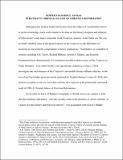Gower’s slothful Aeneas in Batman’s Christall Glasse of Christian Reformation
Date
2014-08-01Author
Reid, Lindsay Ann
Metadata
Show full item recordUsage
This item's downloads: 291 (view details)
Cited 0 times in Scopus (view citations)
Recommended Citation
Reid, Lindsay Ann. (2014). Gower’s Slothful Aeneas in Batman’s Christall Glasse of Christian Reformation. Notes and Queries, 61(3), 349-353. doi: 10.1093/notesj/gju101
Published Version
Abstract
ALTHOUGH early modern medievalisms have been the subject of considerable interest in recent scholarship, much work remains to be done on the literary reception and influence of John Gower’s only major vernacular work, Confessio Amantis, in the Tudor era. We can, no doubt, attribute some of the general silence on the Confessio to the difficulties of assessing an encyclopedic compendium’s literary confluences.1 Nonetheless, as a handful of scholars including A. B. Taylor, Richard Hillman, Arnold A. Sanders, and Kenneth Friedenreich have demonstrated, it is sometimes possible to detect traces of the Confessio in Tudor literature—even when Gower is not specifically credited as a source.2 I here investigate one such instance of the Confessio’s discernible literary influence that has, to the best of my knowledge, gone previously unremarked: Stephan Batman’s reuse of a Dido-and-Aeneas exemplum in amoris causa derived from the Confessio in his polemically motivated work of 1569, A Christall Glasse of Christian Reformation.


